Bioinformatics, Phylogeny and Evolutionary Genomics Group
Members
Maîtresse de conférences
UCBL
Tel: 04 72 44 84 87

Professeure des universités
UCBL
Tel: 33 04 26 23 44 76
Doctorante
UCBL
Enseignant-chercheur CPJ
UCBL
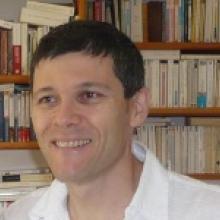
Directeur de recherche
CNRS
Tel: 33 04 72 44 62 97
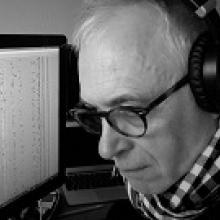
Professeur d'université émérite
UCBL
Tel: 04 72 44 85 60
Ingénieur d'études CDD
CNRS
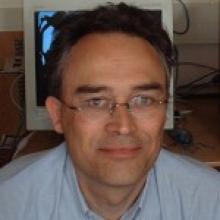
Directeur de recherche
CNRS
Tel: 33 04 72 43 11 67
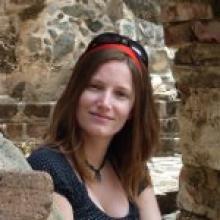
Maîtresse de conférences
UCBL
Tel: 33 04 72 43 29 18
Doctorante
UCBL
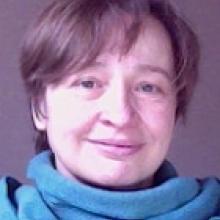
Chargée de recherche
CNRS
Tel: 33 04 72 44 85 60
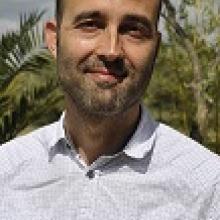
Directeur de recherche
CNRS
Tel: 04 72 44 84 87

Chargée de recherche
CNRS
Tel: 04 72 43 13 44
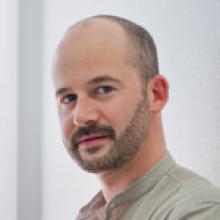
Directeur de recherche
CNRS

Maître de conférences
UCBL
Tel: 04 72 43 35 83
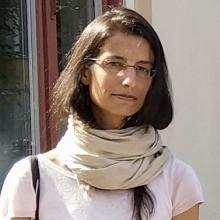
Chargée de recherche
CNRS
Tel: 04 72 44 81 42
Doctorant
CNRS
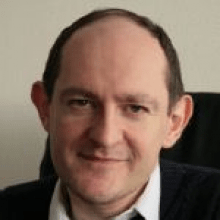
Directeur de recherche
CNRS
Tel: 33 04 72 44 62 96
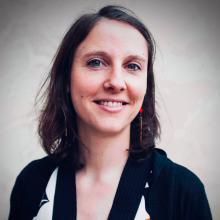
Chargée de recherche
CNRS
Tel: 04 72 43 26 28
Doctorant
UCBL
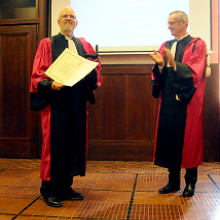
Chercheur invité
UCBL
Our group focuses on two main axes: phylogenomics (i.e. the inference of evolutionary history based on genomics data) and evolutionary genomics (understanding the molecular and population processes that drive genome evolution). We see genomes both as a subject of research (how do genomes evolve, why are they structured the way they are?), but also as a main source of empirical knowledge about the macroevolutionary patterns (what do they tell us about the history of life on Earth?), or about the phenotypes and life-history strategies of organisms. Our works heavily rely on methodological developments (bioinformatics, modeling and statistical inference).
Evolution of genome architecture and expression
Genomes are the result of a long-term evolutionary process, shaped by multiple evolutionary forces. Some genomic features are adaptive (i.e. are beneficial for the fitness of organisms), others result from non-adaptive processes (random drift and biased gene conversion - BGC) or are caused by conflicts between multiple levels of selection (e.g. meiotic drive or the spread of selfish genetic elements). We explore different aspects of genome architecture (base composition landscapes, genome structure and size, impact of transposable elements, …) or functioning (gene expression, lncRNAs, epigenetic landscapes, …), and try to disentangle the relative contribution of adaptive and non-adaptive processes to their evolution. For this purpose, we consider both the molecular mechanisms (mutation, repair, recombination) and the population processes (selection, drift, BGC, …) that shape genetic variation.
Phylogenomics
We are interested in reconstructing the history of life on Earth. This research unfolds along several axes. First, we develop phylogenomic databases of aligned genetic sequences (e.g. BIBI, RiboDB or HOGENOM). Second, we conduct methodological research on how to accurately reconstruct deep phylogenies, infer divergence times, reconstruct ancestral genetic sequences, gene repertoires and life-history traits. This methodological work is translated into publicly available software programs (e.g. SeaView, PhyloBayes, Coevol). Finally, we apply these approaches to several important problems, among which: reconstructing the phylogeny of animals, of archaea, or the global tree of life; using phylogenies and ancestral gene repertoires to investigate the evolution of complex systems and the emergence of molecular and cellular functions in the three domains of life; reconstructing ancestral genetic sequences, a research activity that has industrial and biotechnological applications.
Teaching and outreach
We teach at University Lyon 1 (Master Bioinfo@Lyon), INSA, ENS Lyon, we organize bioinformatics internships. We regularly give conferences on evolution (tree of life, human evolution, genetic diversity, …).
Prospective students and postdocs are invited to apply, as we often welcome visitors for internships or research projects.
Keywords: Molecular evolution and Population Genomics; Phylogenomics; Computational Genomics; Comparative genomics; Bioinformatics; Statistical inference.
Publications
Display of 61 to 90 publications on 1101 in total
Transposable element expression with variation in sex chromosome number: insights into a toxic Y effect on human longevity
Peer Community In Genomics .
Journal article
see the publicationMacSyFinder v2: Improved modelling and search engine to identify molecular systems in genomes
Peer Community Journal . 3 : e28
Journal article
see the publicationChance Favors the Prepared Genomes: Horizontal Transfer Shapes the Emergence of Antibiotic Resistance Mutations in Core Genes
Molecular Biology and Evolution . 40 ( 10 ) : msad217
Journal article
see the publicationThe evolution of GC-biased gene conversion by means of natural selection
ETEE'2023: Empiricism & Theory in Ecology and Evolution .
Conference paper
see the publicationGeographic origin and social status of the Gallic warriors from Ribemont‐sur‐Ancre (France) studied through isotope systematics of bone remains
International Journal of Osteoarchaeology . 33 ( 1 ) : 39-50
DOI: 10.1002/oa.3172
Journal article
see the publicationExperimental analysis of diverse actin-like proteins from various magnetotactic bacteria by functional expression in Magnetospirillum gryphiswaldense
mBio . 14 ( 5 )
Journal article
see the publicationA first step towards the characterization of endogenous retroviruses’ evolutionary history and impact on small ruminant genomes
CNET 2023 : 24th National Congress on Transposable Elements 2023 .
Conference paper
see the publicationOVINE β-ENDOGENOUS RETROVIRUSES : FROM INTEGRATION TO COPY-SPECIFIC TRANSCRIPTION
XXVèmes Journées Francophones de Virologie .
Poster
see the publicationMitigation of the diagenesis risk in biological apatite δ18O interpretation
Palaeogeography, Palaeoclimatology, Palaeoecology . 630 : 111812
Journal article
see the publicationδ2H and δ18O of river water from a high-altitude humid plain of the southern Alps: Implications for the interpretation of the isotopic compositions of bioapatite from humans living close to mountain areas
Journal of Archaeological Science: Reports . 49 : 104020
Journal article
see the publicationEvolution of sex-biased gene expression during transitions to separate sexes in the Silene genus
Preprint
see the publicationGenomic portrait and relatedness patterns of the Iron Age Log Coffin culture in northwestern Thailand
Nature Communications . 14 ( 1 ) : 8527
Journal article
see the publicationGenome-wide variation in the Angolan Namib Desert reveals unique pre-Bantu ancestry
Science Advances . 9 ( 38 )
Journal article
see the publicationSouth Asian maternal and paternal lineages in southern Thailand and the role of sex-biased admixture
PLoS ONE . 18 ( 9 ) : e0291547
Journal article
see the publicationThe genomic diversity of Taiwanese Austronesian groups: Implications for the “Into- and Out-of-Taiwan” models
PNAS Nexus . 2 ( 5 )
Journal article
see the publicationGenomic perspectives on human dispersals during the Holocene
Proceedings of the National Academy of Sciences of the United States of America . 120 ( 4 )
Journal article
see the publicationLook4LTRs: A Long terminal repeat retrotransposon detection tool capable of cross species studies and discovering recently nested repeats
Preprint
see the publicationPhylogenomic analysis of protein‐coding genes resolves complex gall wasp relationships
Systematic Entomology .
DOI: 10.1111/syen.12611
Journal article
see the publicationHow genomics can help biodiversity conservation
Trends in Genetics .
Journal article
see the publicationBridging the gap between the evolutionary dynamics and the molecular mechanisms of meiosis : a model based exploration of the PRDM9 intra-genomic Red Queen
PLoS Genetics . 20 ( 5 ) : e1011274
Journal article
see the publicationCompositionally Constrained Sites Drive Long-Branch Attraction
Systematic Biology . 72 ( 4 ) : 767 - 780
Journal article
see the publicationIdentifying the Best Approximating Model in Bayesian Phylogenetics: Bayes Factors, Cross-Validation or wAIC?
Systematic Biology . 72 : 616 - 638
Journal article
see the publicationGenes and sites under adaptation at the phylogenetic scale also exhibit adaptation at the population-genetic scale
Proceedings of the National Academy of Sciences of the United States of America . 120 ( 11 ) : e2214977120
Journal article
see the publicationDeciphering evolutionary trajectories of lactate dehydrogenases provides new insights into allostery.
Molecular Biology and Evolution . msad223
Journal article
see the publicationProposed mechanism for the selection of lactase persistence in childhood
BioEssays . 45 ( 7 )
Journal article
see the publicationBradyrhizobium commune sp. nov., isolated from nodules of a wide range of native legumes across the Australian continent
International Journal of Systematic and Evolutionary Microbiology . 73 ( 7 ) : 005971
Journal article
see the publicationPopulation designations in biomedical research: limitations and perspectives
HLA: Immune Response Genetics . 101 ( 1 ) : 3-15
DOI: 10.1111/tan.14852
Journal article
see the publicationSelf-compassion and savouring buffer the impact of the first year of the COVID-19 on PhD students' mental health
Stress and Health .
DOI: 10.1002/smi.3142
Journal article
see the publicationDosage compensation evolution in plants: theories, controversies and mechanisms
Philosophical Transactions of the Royal Society B: Biological Sciences . 377 ( 1850 ) : 20210222
Journal article
see the publication
